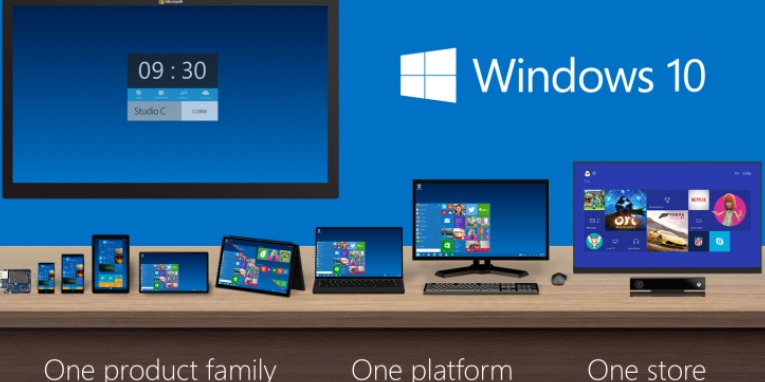If you’re to deter cybercrime and remain protected against all the trouble that it has the potential to cause, you need to get your finger on the pulse on the latest happenings in the IT security industry. By becoming well versed with the latest best practices in this field, you will have a much better chance of fending off 2019’s most dangerous threats.
To find out what you need to know about the state of the IT security industry in 2019, be sure to read on.
Cybercrime is now an industry unto itself
Cybercrime has been around long enough now to actually be deemed an industry unto itself. With a long and storied history for the cybercriminals of today to refer back to, 2019’s hackers and crackers are more than aware of what does and doesn’t work in this field. Ultimately, this means that they can deploy attacks that are much more targeted and effective than those that their predecessors were capable of deploying in the past.
Basically, this means that 2019 is a dangerous time to use the web… especially for businesses. If you own a company, you must go above and beyond to ensure that your organization remains safeguarded against cybercrime. This means that you can’t just rely on antivirus protection to be your first line of defence — you have to invest in technology such as firewalls and unified endpoints. By going the extra mile in this instance and investing in such tech, all of which can be purchased at sonicwallonline.co.uk, you will provide your business with the layer of protection it needs to deter cybercrime in today’s climate.
Dangerous chatbots are here
Cybercriminals are now creating and manipulating chatbots in their attempt to scam their way to success. These dangerous bots are designed to lure Internet users into a false sense of security; they ask users specific questions in a bid to entice and subsequently gather sensitive information from them. On the other end of these bots, cybercriminals are gathering an inordinate amount of information that they are then using in their bid to scam their way to success.
This type of tech has also been known in recent times to misdirect users to nefarious websites, and it has also tricked users into downloading malware files. It is absolutely vital, then, that you know a dangerous chatbot when you see one. Here are just some of the things that you should actively be looking out for whenever you engage in a conversation with a stranger online:
- Split-second responses
- Speaking in full, complete sentences
- The use of too many acronyms and emojis
- The same message being repeated over and over again
- Claims that they can’t speak your language very well
- Syntax mistakes that stick out as being strange (two spaces being used between words, for instance)
- The mentioning of a product or service completely out of the blue
- Unwanted links being sent
- Being asked to share sensitive information for no apparent reason
If any of these points stick out to you when you next engage in a conversation with a stranger online, it more than likely means that you are talking to a dangerous chatbot. Should you find yourself embroiled in such a conversation, exit it immediately without divulging any personal information or clicking on ANY links.
Social media is playing a growing role
Social media has given cybercriminals a new platform on which they can exploit, scam, and hack their way to financial success. Dangerous links can be found everywhere across the length and breadth of social media, most of which are hidden behind catchy headlines. Once clicked, these links then send users to malicious websites and, ultimately, they infect their devices with dangerous viruses and trojans.
If you want to remain safe while you are using your favorite social media sites, you must:
- Type out the entirety of the social media website address into your browser
- Look for a padlock icon whenever you visit a site
- Protect your pages with strong passwords that aren’t based on easy-to-access personal information (your last name, your birthday, etc.)
- Think twice before you post content that identifies you
- Research all the ways your favorite social media sites protect your privacy
- Don’t accept friend requests from people that you do not know
The terms you should be aware of
Being aware of all the general terms that float around the IT security industry will help you to get to grips with it. Here are just some of the terms you should know:
- Cloud
- Domain
- Virtual Private Network
- IP Address
- Exploit
- Breach
- Firewall
- Malware
- Virus
- Ransomware
- Trojan horse
- Worm
- Botnet
- DDoS
- Phishing
- Encryption
- BYOD (Bring Your Own Device)
- Pen-testing
- Clickjacking
The forecast for IT security
Getting to grips with IT security in 2019 is just the start. If you want to remain safe against the plight of cybercrime for years to come, you also need to be aware of what is set to come next.
Here are just a few of things that are forecasted for the IT security field throughout the 20s:
- Worldwide spending on cybersecurity is set to reach $133.7 billion by 2022
- A whopping 83% of enterprise workloads will migrate to the cloud by the end of the year 2020
- Healthcare industry attacks are set to quadruple in the early part of the 20s decade
One thing is for certain — you don’t want to be on the receiving end of a cybercrime attack. Should you ever be impacted by such a plight, all manner of problems could befall you. You could be the victim of identity fraud, you could have all your money stolen from you, or your livelihood could be ruined in the blink of an eye.
To ensure that you are able to fend off cybercrime attacks going forward into the 2020s, it’s important that you know everything there is to know about IT security in 2019. Doing so will give you the platform you need to remain safe for years to come.











![Watch Video Now on xiaohongshu.com [以色列Elevatione perfectio X美容仪 perfectio X 全新仪器黑科技了解下]](https://www.techburgeon.com/wp-content/uploads/2019/07/perfectiox-singapore-150x150.jpg)
